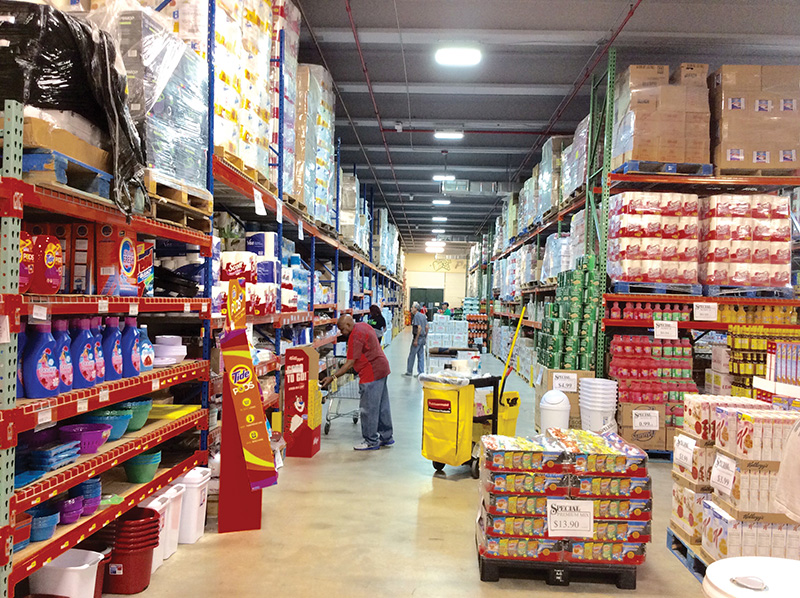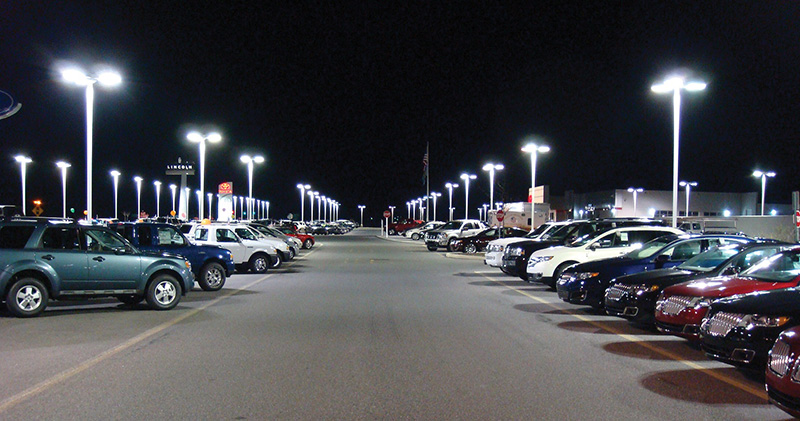Guide to the perplexed LED user.
By Perry Levin
Given how much light impacts our mood, productivity and safety, it’s amazing how little we think about it on a daily basis. Yet a lighting revolution is happening right in front of us, as LEDs are set to replace the majority of commercial lighting in the U.S. in the next decade. Why? LED lights reduce operating expenses. They are more energy-efficient, last longer and produce higher quality light than previous generations of lighting. LEDs are also very environment friendly. It is because of these benefits that LED lighting is expected to replace current inefficient lighting technologies in the next 10 years.
A published survey of over 200 property owners and managers — collectively representing about 220 million square feet of real estate — asked for their perspectives on LED lighting. Most were familiar with LEDs. They had some experience with retrofit projects, but didn’t consider themselves lighting experts.
LED has transformed lighting from a maintenance issue to a method to decrease operating costs. How to take advantage of the proven benefit? Going from lethargy of a longstanding common practice to an innovative technology? Unlike other building products, the benefits of LED lighting may not be best achieved via the bidding process. The transition is much like the early days going from the typewriter to the computer. The difficulty is in dealing with too many products with too little information. The sheer volume of choices for LED product is overwhelming. In the past, the lighting industry was dominated by the likes of GE, Philips and Sylvania. Today, there are literally hundreds of companies marketing LEDs and there is some fool’s gold out there. Not all LEDs are alike. They are differentiated by color rendering index, size of the chips and dissipation of heat.
 How does one choose intelligently? The first step is to have basic information: an inventory of the current lighting and usage, which is the starting point for a side-by-side analysis. The analysis of existing lights and LED alternative lighting is based on brightness, type of lights, watts for each type of light, hours of use per day, total electric expense of each type of light, and the cost of purchasing lighting.
How does one choose intelligently? The first step is to have basic information: an inventory of the current lighting and usage, which is the starting point for a side-by-side analysis. The analysis of existing lights and LED alternative lighting is based on brightness, type of lights, watts for each type of light, hours of use per day, total electric expense of each type of light, and the cost of purchasing lighting.
Information not immediately available can be assembled from the local utility company. Once a portrait is established, value can be further defined. This will identify the most efficient lighting for the specific purpose of each light.
The most efficient type of lighting is not the end of the journey. As all LEDs are not created equal, the challenge is selection and installation. Most people don’t know enough to know. The objective is to differentiate the quality of lighting and the precise long term application. The ideal would be to work with a guide that is technology oriented and is focused on obtaining quality products at competitive prices with reasonable guarantees. Usually the expertise is achieved over years of working with quality manufacturers and assisting in the creation of applications by interpreting the needs for specific industries. An important factor is to distinguish the newer LED products and innovations for 2016. Additionally, it is important that there is expertise in working with building codes, electricians and installers to insure that product is correctly connected.
 The improvements to LED since its inception have resulted in benefits that clearly provide the user with immediate advantages, which include a substantial decrease of operating costs prompting both greater use and evolution. But as with any innovation, increased use needs to be accompanied by a break with the current norm.
The improvements to LED since its inception have resulted in benefits that clearly provide the user with immediate advantages, which include a substantial decrease of operating costs prompting both greater use and evolution. But as with any innovation, increased use needs to be accompanied by a break with the current norm.
— Perry Levin is partner of LED AMP Energy (www.LEDrsmart.com), which has worked with major manufacturers to create lighting applications for its clients. Clients includes property owners, retailers and restaurant tenants who use lighting as a background to enhance ambiance and contribute to brand identification. Email the author at [email protected].
